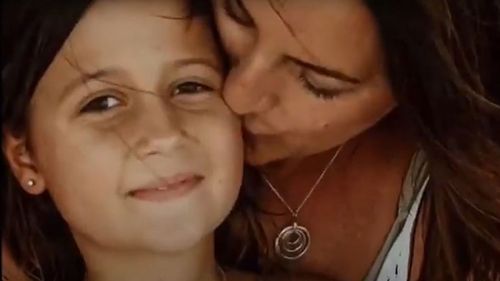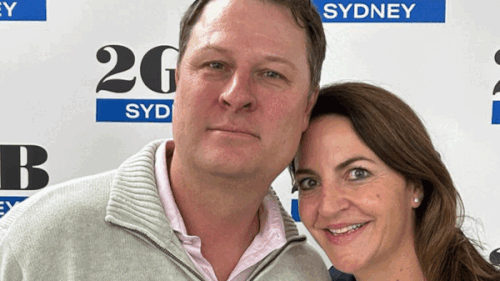Charles and Bridget Poolman had never heard of diffuse midline glioma before the deadly type of brain tumour, also known as DMG, changed their lives in a matter of months.
But the nine-year-old’s symptoms progressed and just before Christmas in 2020 she complained that she was “seeing double”.

“She was a perfectly healthy, active child who had just celebrated Christmas and had a wonderful time. Then they did the CT scan,” the couple told 2GB’s Ben Fordham.
“The doctor pulled us into the room and said, ‘Unfortunately we’ve found a mass’.
“Literally our lives as we knew it then just completely changed, as though someone had just ripped the earth from beneath our feet.”
Over the next five months, Evie underwent four brain surgeries and 30 rounds of radiation for the condition, otherwise known as diffuse intrinsic pontine glioma (DIPG).
The tumour eventually claimed Evie’s life.
The couple said the treatment plan Evie underwent is the same treatment children received 60 years ago.
“There’s been no significant change in the way this type of brain cancer is treated,” they said.

“We thought we might be different and we held out hope. Tragically we were not different.”
According to the charity Run DIPG, DIPG cancer primarily affects children with most diagnoses occurring between six and nine years of age.
Read Related Also: Two dead after visiting Sydney music festivals Listen Out and Knockout
It makes up 10 to 15 per cent of all brain tumours in children, with about 20-25 new diagnoses per year in Australia.
Fewer than 10 per cent of children with the tumours are alive more than two years after their diagnosis.
Poolman said he wouldn’t accept this survival rate as “naturally as any parent wouldn’t”.
“It’s just unacceptable that people are confronted with this in this day and age,” he said.
“We’d never heard of it before we were confronted with it.
“The reality is treatment hasn’t changed in 60 years and 25 per cent thereabouts of all the childhood deaths from cancer every year are relating to this cancer.
“And it’s the most underfunded of all the cancers, yet it’s the most deadly.”
The couple is now advocating and raising awareness of the condition in the hope that they can raise money to help with research.
“We can’t just accept that when you’re diagnosed with this you’re going to die,” Poolman said.
“We need to create solutions and options.”




